
Last winter Petzl brought out a revamped range of technical axes. We covered the NOMIC and ERGONOMIC back in March, but a broken leg above Coire an t-Sneachda put our review of the updated QUARK on hold. So here it is...
Before merging with Petzl, Charlet Moser first introduced a Quark in the early 2000s. The tools were an upgrade of the gently curved Quasar, and with their radically curved shaft they were one of the most technical tools on the market. The original version was designed to be used with clipper leashes (this was just before the leashless climbing revolution), but soon after Petzl brought out a hand rest that could be retrofitted, and the axes were supplied with these as standard. I purchased a pair of these around 2006, and have fond memories of using them on many of my early ice climbs.

The second version was released in about 2010. This was lighter, came with a trigger, and shared the same headset as the NOMIC (Petzl capitalise all their products). The new headset was a big improvement on the previous version, which was solid, but made changing picks near impossible. However there were a couple of durability issues with this version: if you used them lots the head tended to develop a wobble (I understand because the plug connecting the headset to the shaft was too short). In addition the spike at the bottom of the axe was on the thin side, and could be bent without too much effort. I owned a pair of these briefly but returned them to the shop when the spike bent after only two routes.
So what are the current QUARKs like? On first appearances the difference between the third model and the second seem less significant than differences between the first and the second. Closer inspection, however, reveals a more radical overhaul.
I received the Petzl's third iteration of the QUARK last autumn, shortly before an alpine trip. Unfortunately it was a dry autumn and the only alpinism I managed was a wander along the Rochefort Arête. No matter, I thought, with a long Scottish winter looming I'd have plenty of opportunities to put the the QUARKs through their paces on ice, mixed and snow. Sadly in early December, five days into my winter season, I broke my leg in a fall on the Cairngorm Plateau, when a huge gust of wind blew me off my feet. By the time I was climbing again, in early February, the Scottish hills were in virtually in summer conditions, and although I managed a few mixed routes during March's brief winter resurgence, I hardly felt I had given the QUARKs a fair testing.
Well now I have...
Headset
Whilst the aluminium headset is unchanged from the previous iteration, the method Petzl have used to attach this to the shaft is substantially different. On the previous version a short plug of aluminium, the same size as the internal circumference of the shaft, was held in place by a single rivet. Whilst this was a lightweight solution, it was not particularly durable, and many enthusiastic Scottish mixed climbers found that their axe heads developed a wobble. To solve this problem Petzl have lengthened the plug, and placed it in a plastic sleeve. According to Petzl this is fifty percent stronger than the previous version. This seems to have been effective, as after a fair amount of use (and I am neither a light, nor a particularly careful climber) the new QUARKs are still going strong. Time will tell if this is a long term solution, but the signs are promising.
Shaft
Petzl have also changed the shaft slightly, forging the aluminium so it changes shape at the kink. This makes the shafts more ergonomic, presumably so they are more comfortable to hold. The only catch here for me is that when daggering I hold the axes just below the head, so perhaps this is more of a cosmetic change.
Griprest and trig rest
The griprest and spike have changed substantially. Petzl have made the spike a little thicker, and so far I am yet to bend it. They have also added a little spring loaded button to the griprest so it can be folded out of the way. This is handy when plunging in soft snow, particularly for doing simple belays like the stomper and boot axe. I've used this occasionally, and it does work. However in particularly wet conditions, I have found the button gets stuck in and refuses to lock, leaving me with a moving griprest that can pinch my fingers. Having experienced this a couple of times, I now don't push the button unless plunging the shaft is essential. It is a shame Petzl haven't made it possible for users to lock this feature, and I can only assume it wasn't developed with soggy British conditions in mind!
Like the previous version the latest QUARK is supplied with a removable plastic trigrest. This allows one to match higher up the shaft, and the trigger aids precision whilst swinging. In practice I find he trigger uncomfortable, and too small for use with gloved hands - but perhaps smaller-handed users will get on with it. Being able to match hands is useful, but I've found the trigrest gets in the way when hammering/chopping. Thankfully the trigrest is easy to remove, and came in handy converting some old school tools for leashless climbing. Adding some self amalgamating tape is a simple solution to the lack of trigger.
Weight
At a minimum weight of just 465g per tool, these are some of the lightest technical tools on the market, though that increases to 550g with an adze or hammer attachment. That's still significantly lighter than most rivals. This will be an advantage if they're going to be strapped to your pack on a long alpine mixed route, like the Walker Spur or Peuterey Integrale... or even just on your average Scottish winter walk-in. I'm sure some bigger/stronger climbers will prefer a bit more heft though.
Balance/climbing
Both previous versions of the QUARK were well-balanced tools that climbed steep ice and hard mixed terrain incredibly well. As you would expect with a tool of such heritage the third version is no exception. Having a pair of QUARKs in your hands is not going to make the difference between success and failure until the very highest grades. I have climbed up to Scottish VI ice and mixed with these tools no problem, and they could climb far harder if I was better/braver.
Picks
The QUARKs come supplied with a UIAA 2-rated 'ICE' pick as standard. This is the perfect pick for the Scottish winter climber, being strong enough to torque whilst mixed climbing, but tapered enough to not require too much effort when climbing ice. It's great to see Petzl bringing out really strong picks that work well on ice. A big improvement on the older picks that were as strong as anything for mixed terrain, but hard work to get in on icy ground, and a total nightmare to get back out again. If you're going away cascade climbing somewhere like Rjukan, Cogne, or Canada it'd be worth investing in a pair of their UIAA 1-rated PUR'ICE picks. Petzl also make a more hefty 'DRY' pick designed with dry tooling in mind. This can be fitted to the QUARK, but personally I'd rather use a more suitable tool like a NOMIC or ERGONOMIC for that activity. If climbing very hard, very cold ice it might be worth adding the pick weights for extra penetrating power.

Adze/hammer
The QUARK comes with an Adze and hammer as standard. As expected the Adze is good for chopping and clearing, whilst the hammer excels at hitting things. That said, hammering is much easier once the Trigrest has been removed. Thanks to the modular headset it is possible to remove both of these. Petzl also make a low profile version of the hammer, which might be worth considering if you rarely hammer things. For the all round Scottish climber it is hard to think why you would remove either Hammer or Adze.
Leashes/tethers
I've used the latest QUARKs exclusively leashless. With thethers, I clip the krabs directly into the spike at the bottom of the axe. I have experimented with tying small loops of cord through these, but find it an unsatisfactory solution, especially when using the axe for mountaineering - and the eye is big enough to clip directly anyway.
Conclusion
The updated QUARK is a superb tool, that will climb equally well on ice, mixed and snow. Petzl seem to have ironed the key durability issues of the previous model. Whether you are an experienced winter climber looking to upgrade your existing tools, or an aspiring mountaineer looking for your first pair, the QUARK would be an excellent choice for a mid-range do-it-all winter tool. Whilst there are other cheaper tools available, the RRP of £210 per axe is comparable with heavier tools from other leading brands. I am not a fan of the movable griprest, or the trigrest, but the former can be ignored, and the latter can be easily removed, so this does nothing to detract from an otherwise brilliant tool. If you are looking for something that will take you from grade II to (at least) grade VII then this has to be one of the best choices available right now.
- Weight: 465g, not including accessories (550g with PANNE or MARTEAU)
- Shaft curved below the head
- Shaft is straight enough for use in piolet-canne mode
- Shaft is hydroformed for optimal grip in the middle, for snow couloirs
- Over-molded, bi-material handle provides good grip while insulating from the cold
- TRIGREST QUARK and GRIPREST QUARK handrests strengthen the grip on difficult sections
- ICE pick is tapered at the tip (3.3mm) and versatile across all terrain: snow, ice and mixed
- Compatible with MASSELOTTE weights to modify the balance and improve the inertia
- Entirely modular head
- TRIGREST QUARK handrest is height adjustable without tools
- GRIPREST QUARK handrest folds in easily for planting the ice axe in snow
- Connection hole is compatible with V-LINK elasticated loss-prevention webbing
- Specifications: Pick type: 2 Shaft type: 2
- Materials: aluminum, steel, glass fiber reinforced plastic
- Certifications: CE, UIAA
- Sold with ICE pick, MARTEAU or PANNE, TRIGREST QUARK and GRIPREST QUARK handrests
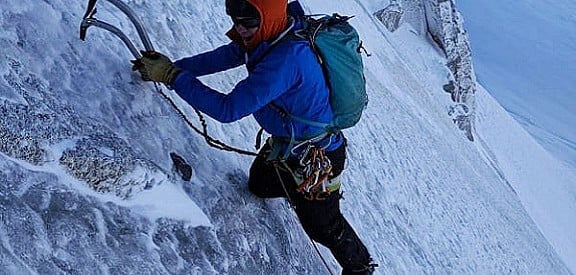
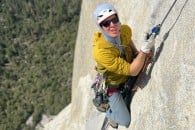









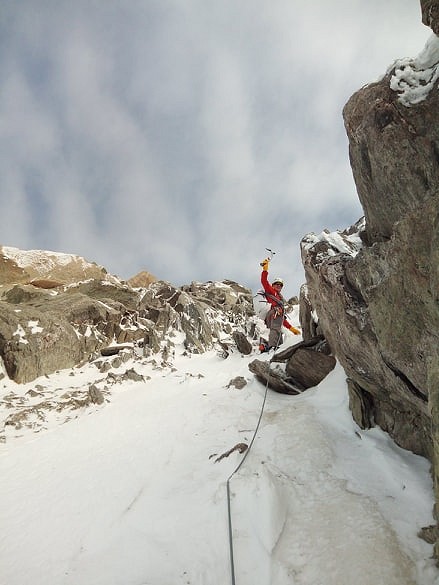
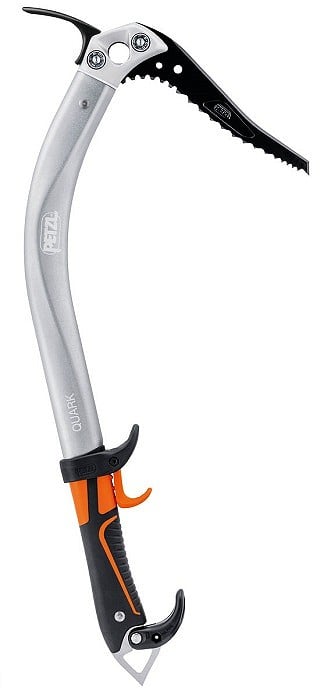





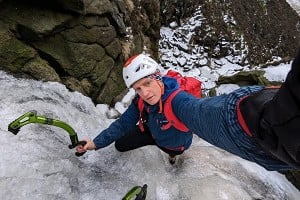
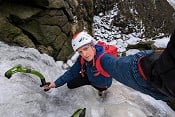

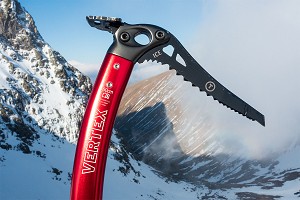
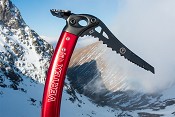

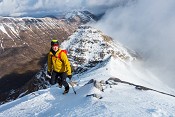
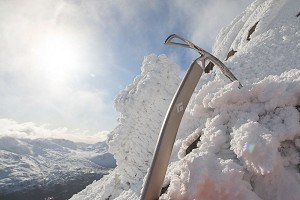
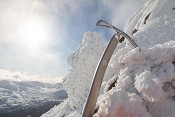
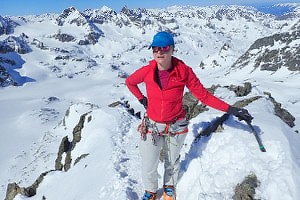
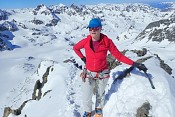

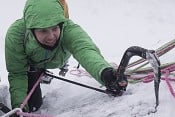
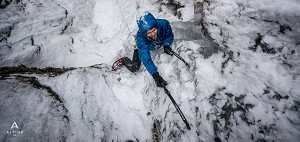

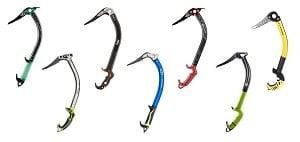

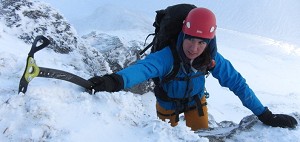

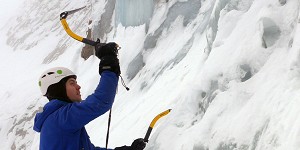


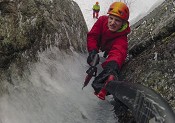
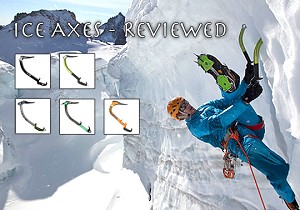
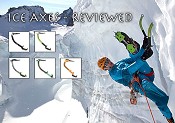
Comments
As you say, that trigrest thing is annoying as the orange mini trigger is way too small for gloved fingers. I suppose the orange thing can be cut off and the main trigrest glued into place.
I can see the advantage for the Alps and easier winter climbing but I just don’t buy the argument that these will see you through to harder grades. I’m sure you can climb V, VI, VII and more with these but why make life hard for yourself? A pair or Nomics or other more technical tools would be much better.
I’d say the perfect grade range for these is mostly up to IV with some V. If someone is mostly climbing V and above, I wouldn’t recommend these. The handle isn’t that ergonomic, the trigrest is rubbish, the overall shape isn’t as good - these things become more important at higher grades. In the same way that it’s possible to rock climb fairly hard in floppy shoes but no one does because again why make life hard for yourself?
A quick google shows that there’s hardly any difference in price (less than £50) between a pair deal for Quarks and Nomics from established UK retailers. It’s just a no brainer to go for the more technical tool if you will be doing more technical climbing. Though the new Nomic does have some issues of its own.
Get the mixed picks for mixed climbing (or better still the tougher Kuzniaszpeju ones) and keep the ice ones for water ice.
Completely agree. I have never understood the argument that Quarks or equivalent are the best all-round axe unless you're doing upside down sport mixed shenanigans.
Maybe other folk will disagree here, but I think basically anything you can do with a Quark you can do easier with a Nomic. As for the whole 'easier for plunging' argument, just try pushing harder with a Nomic?! On the sort of terrain where you want to plunge your tool in deep, the snow's probably soft anyway.
I own both and only ever use the Quark when the benefit of the weight saving outweighs the decrease in climbing performance (e.g. when on a big alpine route with only moderate technical difficulty).
Not quite... anything that uses the tool 'backwards' is totally useless with the Nomic! Some people moan about this re: hammering pegs/gear, but this doesn't bother me that much. What DOES annoy me is how difficult it is to clean shitty ice away before placing an ice-screw. I'd probably get used to it if I used Nomics regularly but I found myself desperate to get back to my Quark Adze when I swapped to my partners Nomes on steep ice in Cogne!
I'm sure you (and almost everyone else!) is right in general though. I reckon Nomes take a good half grade off tooling routes (but you know I like to make life hard for myself so I'll probably stick stubbornly to my Quarks for a while longer!)
Hydro formed shaft will be for rigidity and weight saving me thinks.
I use BD Vipers for less technical alpine stuff, which have a far better build quality in my opinion for a fractionally heavier weight. I agree with Misha though. Why use a straighter shafted axe for more technical stuff? I had permanently enlarged index finger knuckles during winter when I used these sorts of axes regularly. Pegs are no doubt easier, but I've largely given up using these anyway due to the degree they scar the rock. There's some pretty lightweight deadmans out there if ice axe belays are a necessity (eg MSR). I've arrested with Nomics and generally use an axe and walking pole combo on moderate terrain if I want a bit of walking stability.